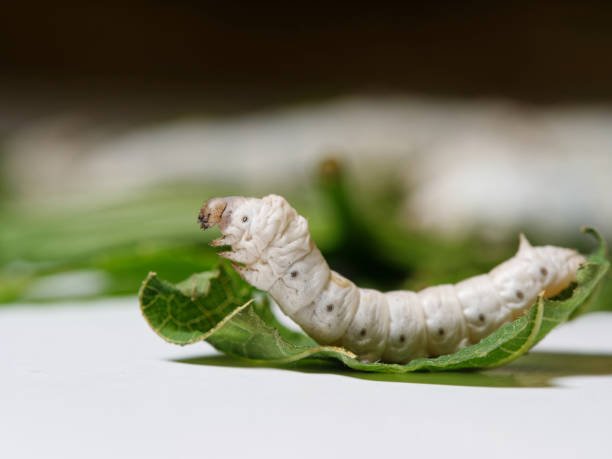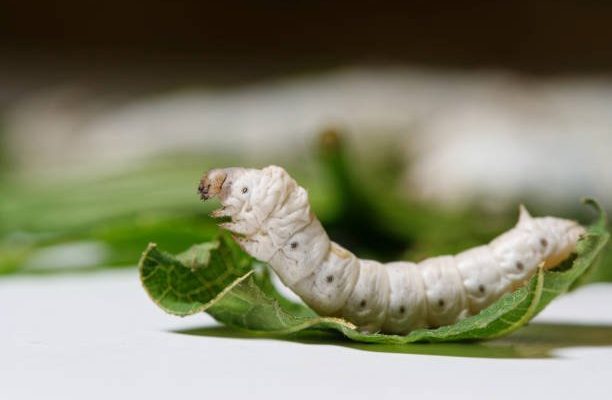
So, what exactly is sericulture, and why should we care about these little worms? Here’s the scoop: sericulture is the method of raising silkworms to produce silk. This process involves a lot of love, care, and understanding of the silkworm’s life cycle. Just like a fine recipe requires the right ingredients and careful preparation, successful sericulture means knowing how to nurture these creatures to help them do their best work. Let’s dive deeper into the role of silkworms in this ancient craft and see why they’re so important.
What Are Silkworms?
Silkworms, or *Bombyx mori*, are the larvae of the silk moth and have been cultivated for thousands of years, primarily in Asia. They’re tiny, but they have a huge impact on the silk industry. These worms feed mainly on mulberry leaves and go through several growth stages, known as instars, before they spin their cocoons.
You might be wondering how they turn from these little caterpillars into silk-producing machines. Well, it’s all about their natural instincts. When silkworms are ready to pupate, they start spinning a protective cocoon around themselves using a long strand of silk. This silk filament, which can measure over a thousand meters in length, is what we ultimately harvest for silk production. Isn’t that amazing?
Seeing these silkworms at work is like witnessing nature’s creativity firsthand. It’s a beautiful process that intertwines biology and craftsmanship—making silk is not just about the end product; it’s about understanding and respecting the lifecycle of these remarkable insects.
The Life Cycle of Silkworms
To truly appreciate the role of silkworms in sericulture, we should look at their life cycle, which consists of four main stages: egg, larva, pupa, and adult moth.
– **Egg Stage**: The journey begins when female silk moths lay eggs. In about 10 days, these eggs hatch into tiny larvae.
– **Larva Stage**: Once hatched, the larvae—or silkworms—are ravenous! They eat tons of mulberry leaves, growing rapidly. This stage lasts about 4 to 6 weeks, during which the worms molt several times.
– **Pupa Stage**: After reaching maturity, the silkworms spin their cocoons. It’s during this pupa stage that they transform into moths.
– **Adult Stage**: Finally, the mature moths emerge from their cocoons, ready to begin the cycle all over again.
Each stage has its significance in sericulture. For instance, the larval stage is all about growth, while the pupa stage is where the magic happens—the cocoon is where that treasured silk is made. Understanding these stages helps sericulturists know how to care for the worms at every turn, ensuring a healthy and productive yield.
The Importance of Mulberry Trees
You can’t talk about silkworms without mentioning their favorite snack: mulberry leaves. These trees are absolutely vital for silkworm cultivation. They not only provide nourishment but also play a crucial role in the quality of silk produced.
Mulberry trees are particularly favored because their leaves are rich in nutrients that help silkworms grow strong and healthy. This quality feeds directly into the silk itself—healthier worms spin finer silk. When sericulturists plant mulberry trees, they’re essentially planting the foundation for their silk production.
Here’s an interesting note: the species of mulberry can affect the taste and quality of the silk. Think of it like how different grape varieties produce different wines. The relationship between silkworms and mulberry trees is a beautiful example of *symbiosis*—two different species working together for mutual benefit.
Traditional Sericulture Practices
In traditional sericulture, every step counts, and it involves a deep connection with nature. The process begins with selecting healthy silkworm eggs, which are typically reared in a controlled environment to protect them from pests and diseases.
Once the eggs hatch, sericulturists closely monitor the larvae’s feeding. They ensure the silkworms get plenty of fresh mulberry leaves, usually harvested multiple times a day. This might sound like hard work, but it pays off when the worms begin to spin their cocoons.
After the cocoons are formed, they’re harvested carefully. The key here is timing; if you wait too long, the moths will emerge and break the silk thread. It’s a delicate balance, much like trying to catch a wave at just the right moment—too early or too late, and you miss the ride.
Once harvested, the cocoons are then boiled to kill the pupa and loosen the silk threads, which can then be spun into yarn. This entire process reflects a blend of patience, skill, and respect for nature—a cornerstone of traditional sericulture practices.
Silk Production and Economic Impact
Silk production is not just a traditional craft; it’s also a significant source of income for many communities across the globe. In countries like China, India, and Thailand, sericulture supports countless families and contributes to local economies.
The silk industry provides jobs at various levels—from farming to production and even retail. This means that when you purchase silk, you’re not just buying fabric; you’re supporting a whole ecosystem of livelihoods.
Moreover, the demand for silk remains high, not just for clothing but also for home décor and luxury items. It’s fascinating to see how traditional practices adapt to modern markets, creating a sustainable path for the future while honoring age-old techniques.
Challenges Facing Sericulture Today
Even with its rich history, sericulture faces several challenges today. Issues like climate change, pests, and diseases can threaten silk production. For instance, changes in weather patterns may affect mulberry tree growth, leading to food shortages for silkworms.
Additionally, the industry has started to see competition from synthetic fibers, which can offer similar benefits at a lower cost. This puts pressure on traditional sericulturists to innovate and find new ways to maintain their craft while ensuring quality and sustainability.
Another concern is the ethical treatment of silkworms. Some consumers are now seeking cruelty-free silk alternatives, raising awareness around the production methods used in sericulture. As a result, many traditional sericulturists are exploring more humane methods, such as allowing moths to emerge before harvesting the silk.
The Future of Silkworms in Sericulture
Looking ahead, the future of silkworms in traditional sericulture seems promising, but it will require adaptation. With increasing interest in sustainable and ethically produced materials, there’s a real opportunity for traditional sericulturists to thrive.
Many are turning to organic farming practices, using less harmful chemicals and promoting biodiversity. This shift not only helps the environment but also produces high-quality silk that can command a premium price.
Innovations in technology, like precision farming, can also enhance silk production, helping sericulturists monitor their crops and silkworms more effectively. It’s an exciting time to be involved in this ancient craft, blending time-honored traditions with modern techniques.
Silkworms are much more than just caterpillars; they’re the backbone of a rich tradition that spans centuries. Their role in traditional sericulture is filled with fascinating details—from their life cycle to their relationship with mulberry trees and the economic impact they have on communities.
As we continue to appreciate the beauty and value of silk, it’s essential to recognize the incredible journey it takes from silkworm to fabric. By supporting traditional sericulture and considering the ethical implications of silk production, we help ensure that this remarkable craft can thrive for generations to come. So next time you admire a silky scarf or blouse, remember the tiny heroes behind its creation—the silkworms.

